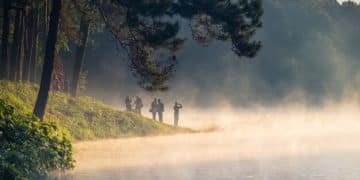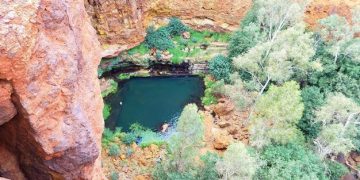Top Birdwatching Hotspots in the US: A 2025 Guide
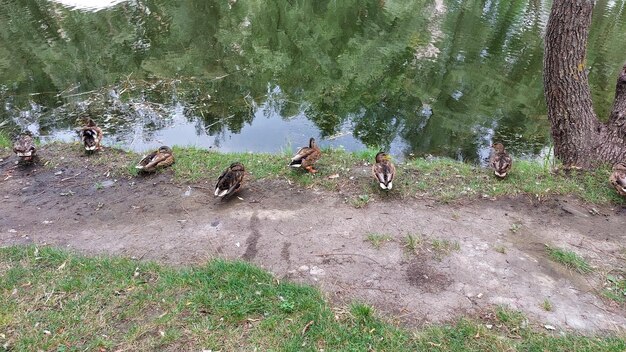
Discover the best birdwatching hotspots across the United States in 2025, offering prime locations for identifying and observing diverse avian species, from coastal reserves to national parks.
Embark on a captivating journey to the premier birdwatching hotspots: a 2025 guide to identifying and observing US avian species unveils the most spectacular locations across the United States for bird enthusiasts.
Exploring the World of Birdwatching
Birdwatching, or birding, is a popular hobby that connects people with nature and allows them to appreciate the beauty and diversity of avian life. Whether you’re a seasoned ornithologist or a beginner, the United States offers numerous incredible locations for observing birds in their natural habitats.
Why Birdwatching is a Rewarding Hobby
Birdwatching isn’t just about spotting birds; it’s an opportunity to learn about ecology, conservation, and the intricate relationships between species and their environments. It’s a hobby that can be enjoyed alone or with friends and family, offering both relaxation and mental stimulation.
Moreover, birdwatching provides a chance to contribute to citizen science. By recording observations and submitting data to platforms like eBird, birdwatchers help scientists track bird populations, migration patterns, and the impacts of climate change.
Essential Gear for Birdwatching
Having the right gear can significantly enhance your birdwatching experience. While a keen eye and a quiet demeanor are essential, certain tools make identification and observation easier and more enjoyable.
- Binoculars: A good pair of binoculars is indispensable for bringing distant birds into clear view. Look for binoculars with 8x or 10x magnification and a lens diameter of at least 40mm for optimal performance.
- Field Guide: A field guide specific to the region you’re birdwatching in is crucial for identifying the birds you encounter. Choose a guide with detailed illustrations or photographs and concise descriptions.
- Notebook and Pen: Keep a notebook and pen handy to record your observations, notes, and interesting behaviors you witness.
- Comfortable Clothing: Dress in layers appropriate for the weather, and choose muted colors that blend in with the environment to avoid startling birds.
Birdwatching is an enriching activity to connect with our avian friends in nature.
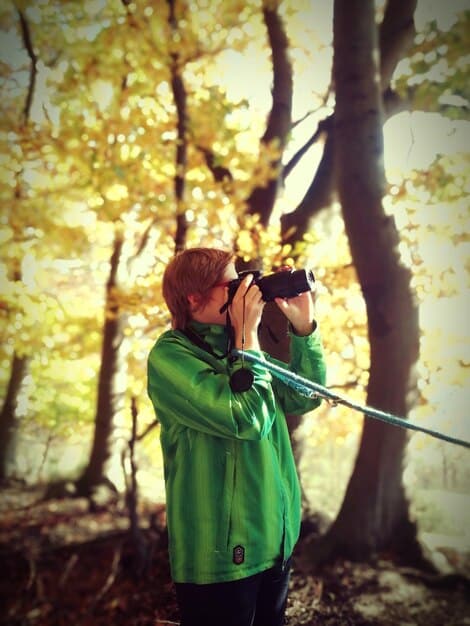
Coastal Birding Hotspots
Coastal regions in the United States are prime locations for birdwatching due to their diverse habitats, including beaches, salt marshes, and estuaries. These areas attract a wide variety of shorebirds, seabirds, and migratory species.
Cape May, New Jersey
Cape May, New Jersey, is renowned as a major migratory stopover point. During the spring and fall migrations, countless birds pass through this area, making it a paradise for birdwatchers. The Cape May Bird Observatory offers guided walks, workshops, and events throughout the year.
In addition to migratory species, Cape May is home to numerous year-round residents, including ospreys, bald eagles, and various species of gulls and terns. The diverse habitats of the area support a rich array of avian life.
Point Reyes National Seashore, California
Located north of San Francisco, Point Reyes National Seashore is a coastal gem that attracts a variety of seabirds, shorebirds, and raptors. The park’s diverse landscapes include rugged cliffs, sandy beaches, and lush grasslands.
- Common Birds: Black oystercatchers, brown pelicans, and various species of gulls are commonly seen along the coastline.
- Migration Season: During the fall migration, look for migrating raptors such as peregrine falcons and golden eagles.
- Tule Elk Preserve: Visit the Tule Elk Preserve to spot birds that thrive in grassland habitats.
Coastal birding hotspots help enthusiasts in exploring a number of bird species.
Inland Birding Destinations
Beyond the coasts, the United States boasts numerous inland birding destinations that offer unique opportunities to observe a variety of species. These locations range from national parks to wildlife refuges, each with its distinctive avian inhabitants.
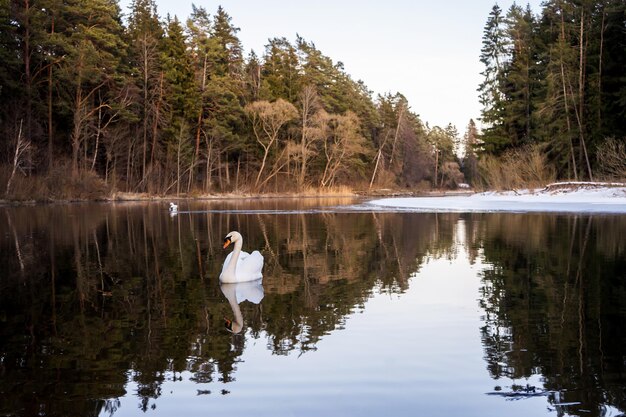
Yellowstone National Park
Yellowstone National Park, spanning parts of Wyoming, Montana, and Idaho, is not just a geothermal wonderland but also a haven for birds. The park’s diverse habitats, including forests, meadows, and waterways, support a wide range of species.
Look for trumpeter swans, sandhill cranes, and various species of waterfowl in the park’s wetlands. In forested areas, keep an eye out for woodpeckers, owls, and songbirds.
Great Smoky Mountains National Park
Straddling the border of North Carolina and Tennessee, Great Smoky Mountains National Park is known for its lush forests, diverse flora, and abundant birdlife. The park is home to over 200 species of birds, making it a must-visit destination for birdwatchers.
The park’s high elevations provide habitat for northern species such as the golden-crowned kinglet and the northern saw-whet owl. Lower elevations are home to migratory songbirds such as the wood thrush and the scarlet tanager.
Bird watchers can learn more about local bird species by visiting inland birding destination.
Bird Sanctuaries and Refuges
Bird sanctuaries and wildlife refuges play a crucial role in protecting bird habitats and providing safe havens for migratory and resident species. These protected areas offer birdwatchers excellent opportunities to observe birds in a relatively undisturbed environment.
National Wildlife Refuge System
The National Wildlife Refuge System, managed by the U.S. Fish and Wildlife Service, encompasses over 560 refuges across the country. These refuges protect a wide range of habitats, from wetlands and grasslands to forests and deserts, providing critical habitat for birds and other wildlife.
Many refuges offer visitor centers, observation platforms, and hiking trails, making them accessible and enjoyable for birdwatchers of all skill levels.
- Advantages of Refuges: Birdwatchers can observe diverse species and visit visitor centers to learn.
Specific Notable Refuges
While the National Wildlife Refuge System includes hundreds of sites, certain refuges are particularly renowned for their birdwatching opportunities. Some notable examples include:
- Bombay Hook National Wildlife Refuge, Delaware: This refuge is a major stopover point for migratory shorebirds and waterfowl.
- Aransas National Wildlife Refuge, Texas: This refuge is the primary wintering ground for the endangered whooping crane.
- Klamath Basin National Wildlife Refuges, Oregon and California: These refuges provide critical habitat for migratory waterfowl in the Pacific Flyway.
Bird sanctuaries provide shelter and safety for many migrating bird species.
Tips for Identifying Birds
Identifying birds can be a challenging but rewarding aspect of birdwatching. Familiarizing yourself with key characteristics and behaviors can help you distinguish between different species and enhance your understanding of avian life.
Focus on Key Characteristics
When identifying a bird, pay attention to key characteristics such as size, shape, color patterns, and bill shape. These features can provide valuable clues to the bird’s identity. For example, a small, brightly colored bird with a slender bill is likely a warbler or a hummingbird, while a large bird with a hooked bill is likely a raptor.
Also, consider the bird’s behavior. Is it foraging on the ground, perching in trees, or soaring overhead? Different species have different foraging strategies and habitat preferences.
Using Field Guides Effectively
A good field guide is an indispensable tool for identifying birds. Familiarize yourself with the layout of the guide and learn how to use it effectively. Look for guides that include detailed illustrations or photographs, range maps, and concise descriptions of key characteristics.
Start by narrowing down the possibilities based on the bird’s size, shape, and color patterns. Then, consult the guide for more specific identifying characteristics and behaviors.
- Important Tip: Start by narrowing down based on size when using your field guide.
Following the instructions and tips will help any enthusiast get better at identifying multiple bird species.
The Future of Birdwatching in the US
As we look ahead to 2025 and beyond, the future of birdwatching in the US is likely to be shaped by several factors, including technological advancements, conservation efforts, and changing environmental conditions. Staying informed about these trends can help birdwatchers adapt and make the most of their hobby.
Technological Innovations
Technology is playing an increasingly important role in birdwatching, with new tools and resources emerging to enhance the experience. Smartphone apps, for example, can help birdwatchers identify species, record observations, and access real-time migration data.
Furthermore, the use of drones and remote cameras is allowing researchers and birdwatchers to monitor bird populations and behaviors in previously inaccessible areas. These technologies can provide valuable insights into avian life and help inform conservation efforts.
Conservation Challenges
Despite the popularity of birdwatching and the efforts of conservation organizations, birds in the US face numerous challenges, including habitat loss, climate change, and pollution. These threats can have significant impacts on bird populations and biodiversity.
Therefore, it’s important for birdwatchers to support conservation efforts and advocate for policies that protect bird habitats and mitigate the impacts of climate change. By working together, we can ensure that future generations have the opportunity to enjoy the beauty and wonder of avian life.
Many changes are happening with technology when it comes to bird watching to bring people even closer to nature.
Ethical Birdwatching Practices
Ethical birdwatching is crucial for minimizing disturbance to birds and their habitats. By following ethical guidelines, birdwatchers can ensure that their activities do not negatively impact bird populations or the environment.
Respect Bird Habitats
When birdwatching, it’s important to respect bird habitats and avoid causing any damage or disturbance. Stay on designated trails, avoid trampling vegetation, and never approach nests or nesting areas too closely.
If you encounter a bird that appears distressed or injured, contact a local wildlife rehabilitation center for assistance.
Avoid Using Bait or Lures
Using bait or lures to attract birds can disrupt their natural foraging behaviors and make them dependent on artificial food sources. It’s best to observe birds in their natural habitats without interfering with their behavior.
- Reasoning: Disrupting foraging behavior is harmful.
Ethical birdwatchers demonstrate a level of respect and care for birds in their environment.
| Key Point | Brief Description |
|---|---|
| 🔭 Birdwatching Hotspots | Discover top locations across the US for observing diverse avian species in their natural habitats. |
| 🏞️ Coastal Birding | Coastal regions offer varied habitats like beaches and marshes, attracting shorebirds and seabirds. |
| 🌲 Inland Destinations | Explore inland parks and refuges for unique avian species thriving in forests, meadows, and waterways. |
| 🦉 Ethical Practices | Respect bird habitats and avoid disturbances to protect bird populations and their environment. |
FAQ
▼
A good birdwatching hotspot typically features diverse habitats, a high concentration of bird species, and accessibility for birdwatchers with trails and viewpoints. It should also have minimal human disturbance to protect the birds.
▼
Essential items include binoculars, a field guide, a notebook and pen for recording observations, and appropriate clothing for the weather conditions. A camera can also be useful for capturing memorable bird sightings.
▼
Focus on key characteristics such as size, shape, color patterns, and behavior. Consult your field guide to compare your observations with known species. Apps like Merlin Bird ID can also help quickly identify birds.
▼
Maintain a respectful distance from birds and their nests, avoid using bait or lures, minimize noise, and stay on marked trails to protect habitats. Always prioritize the birds’ well-being over your desire for a closer look.
▼
Technology offers tools like bird identification apps, real-time migration tracking, and high-resolution cameras for documentation. GPS devices can help navigate to hotspots, and online forums allow sharing information with fellow birdwatchers.
Conclusion
Exploring the world of birdwatching in the US reveals a plethora of opportunities to connect with nature, observe avian life, and contribute to conservation efforts. By visiting the hotspots, following ethical practices, and utilizing available resources, birdwatchers can have an enriching and fulfilling experience while helping to protect these incredible creatures.




